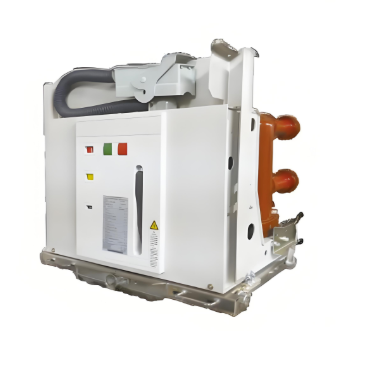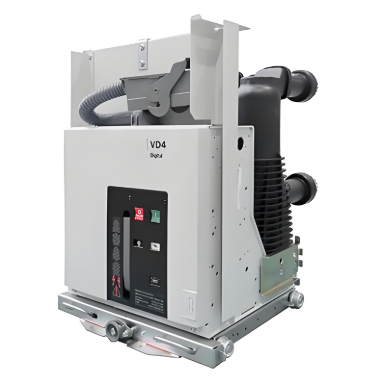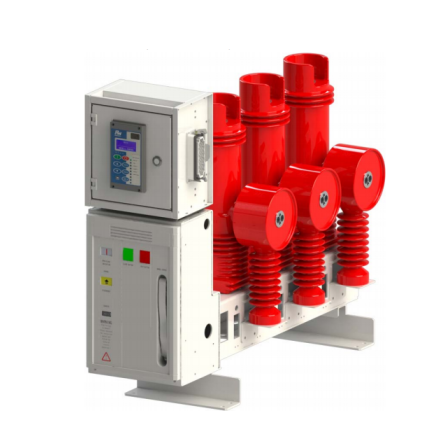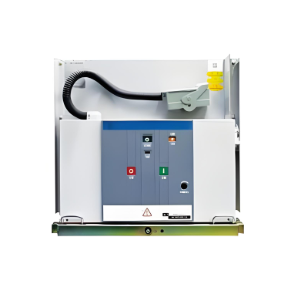Revolutionizing Outdoor High-Voltage Grid Protection over Conventional Breakers-- Reclosers
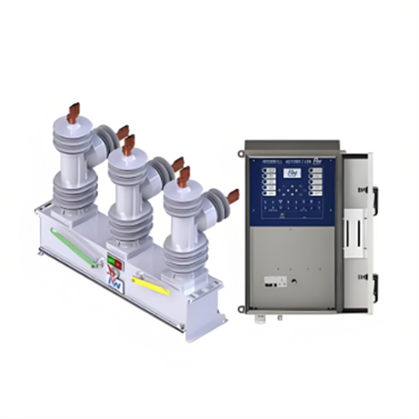
Ⅰ. Core Functional Positioning Differences
1. Recloser: Intelligent Self-Healing Switch
- Essence: Integrates arc-extinguishing system, operating mechanism, and intelligent control unit. Capable of autonomous fault detection → tripping → time-delayed reclosing → locking.
- Core Advantages:
- Programmable Operation Sequences: Supports customizable sequences (e.g., "one fast + three delayed" or "two fast + two delayed") to distinguish transient/permanent faults. Example: First fast trip clears transient faults; subsequent delayed trips coordinate with fuses.
- No External Control: Built-in current transformers (CTs) and microprocessors directly use line current for power, operating independently without relay protection panels.
2. Outdoor High Voltage Circuit Breaker: Basic Interruption Device
- Essence: Solely tasked with short-circuit current interruption, relying on external relays for control logic.
- Limitations:
- Fixed operation sequences (e.g., "trip → 0.3s → close-trip → 180s → close-trip"), unable to adapt to complex distribution network protection.
- Requires control cabinets and DC power sources, increasing system complexity and cost.
II. Core Advantages of Reclosers
1. High Integration & Intelligence
- Self-Contained Control: Embedded current detection, logic judgment, and line-powered operation enable full automation, minimizing manual intervention.
- Advanced Protection Algorithms:
- Inverse-time characteristic curves precisely match fuse ampere-second characteristics for optimized coordination.
- Optional zero-sequence CT modules enhance ground fault detection accuracy.
2. Leap in Power Supply Reliability
- Multi-Reclosing Mechanism: 3–4 reclosing attempts (e.g., "one fast + three delayed") restore 80% of transient faults on first attempt.
- Rapid Fault Isolation: With sectionalizers, locates and isolates faults in ≤30s, reducing outage scope by 70%+.
- Backfeed Prevention: Tie recloser (QR0) delay-closing logic avoids reverse power flow during substation maintenance.
3. Cost Efficiency & Deployment
- 40% Lower TCO:
- Eliminates relay protection panels, DC screens, and switchroom space.
- Pole-mounted installation (200–300 lbs) vs. breakers requiring 1,800–3,000 lbs + concrete foundations.
- 3× Longer Maintenance Cycles:
- Vacuum/SF₆ types endure 10,000 operations; maintenance every 3–5 years vs. frequent spring-mechanism repairs in breakers.
4. Extreme Environment Adaptability
- Enhanced Weather Resistance:
- Three-phase common tank (SF₆-insulated) tolerates -40°C to 40°C.
- Epoxy-encapsulated split-phase design suits mines/coastal areas.
- Topology Flexibility:
- Single-phase units for rural branches; three-phase assemblies resolve neutral grounding issues.
III. Key Parameter Comparison
|
Characteristic |
Recloser |
Outdoor HV Circuit Breaker |
Advantage |
|
Rated Current |
400–1200A (630A mainstream) |
1200–3000A |
More economical for light loads |
|
Short-Circuit Breaking Capacity |
≤16kA (high-end: 25kA) |
20–40kA |
Meets most branch-line needs |
|
Operation Sequence |
Programmable (e.g., two fast + two delayed) |
Fixed standard sequence |
Adapts to protection strategies |
|
Control Dependency |
Self-contained (IED-operated) |
Requires external relays |
Simplified system architecture |
|
Installation |
Pole-mounted |
Ground frame structure |
Space-saving, rapid deployment |
IV. Typical Applications
- Rural/Mountainous Networks:
- Segments long overhead lines (e.g., 10kV radial feeders), replacing "breaker + protection panel" setups.
- Urban Grid Automation:
- Ring Main Unit (RMU) nodes (QR0 enables automatic load transfer) with FTU for "three-remote" control.
- Special Sites: Oilfields/mines (corrosion-resistant design + anti-theft password function).
V. Limitations & Solutions
- Breaking Capacity Limit: Use circuit breakers for short-circuit currents >16kA.
- Ungrounded Systems: Add zero-sequence CTs to improve single-phase ground fault detection.

